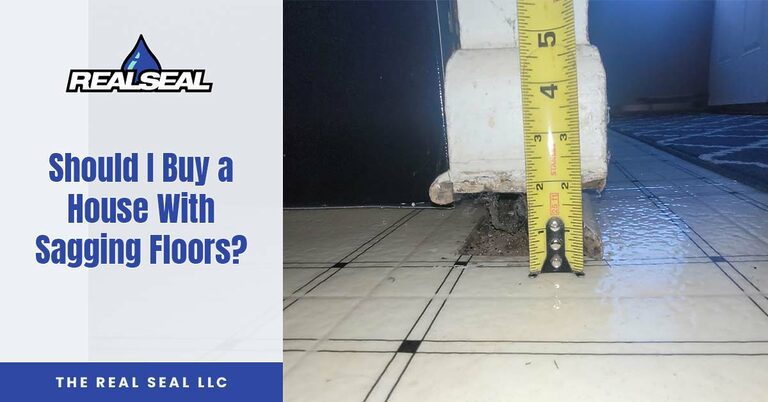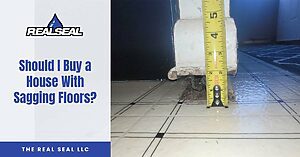Wondering if you should buy a house with sagging floors over the crawl space? If so, you’ve landed on the right page because that’s what this article is about. We’ll review what causes floors over crawl spaces to sag, signs there might be a problem in your crawl space, possible repair options, and what you need to know about buying a house with sagging floors (It’s not necessarily a deal breaker).
What Causes Sagging Floors Over Crawl Spaces?
Various things can cause floors to sag over crawl spaces, including the following:
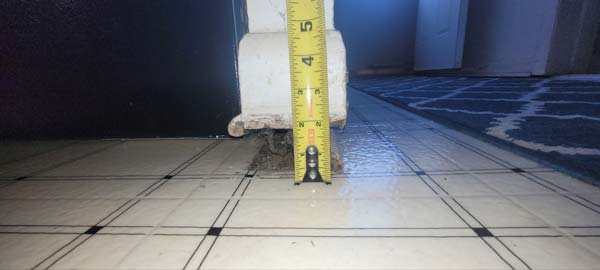
- Water damage – Excessive moisture can cause the wooden structures in the crawl space to rot and weaken over time. If this happens, they won’t be able to adequately support the floor above them.
- Termites – Termites can devour the crawl space’s wooden support structures (beams, joists, support posts) and cause them to lose their structural integrity. This can cause the floors to sag and even collapse if the infestation is left unchecked.
- Settled support piers – Support piers can sink into the ground and become non-vertical over time. If this happens, the floor above the crawl space can become uneven and sag.
- Improper design – Sometimes, the crawl space doesn’t contain enough joists, beams, or support posts. They’re also possibly not large enough to support the floor above.
Taking sagging floors seriously is essential to avoid potential structural damage or collapse. If you notice any signs of sagging floors, such as unevenness or sloping (more on this below), it’s essential to get a professional assessment and address any underlying issues as soon as possible.
Signs There’s a Problem With the Support Structures in Your Crawl Space
Signs there might be a problem with the wooden support structures in your home’s crawl space include the following:
- Your floor is sagging – Your floor might also feel bouncy when you walk it.
- There are cracks in the walls, floors, or ceilings.
- Doors and windows don’t open and close properly anymore.
- Your floors are uneven or sagging – What happens when you place something round on the floor like a marble?
- Cabinets or countertops are pulling away from the wall.
- There’s a musty smell in your home – This could indicate a moisture problem in the crawl space. If so, the support posts, beams, or joists might be deteriorating and unable to support the floor above.
- There’s mold on the floor or baseboards above the crawl space – This is a sign the crawl space might be full of mold. If so, that means there’s a moisture problem in the crawl space, which could be affecting the ability of the wooden support structures to hold up the floor.
- You have a problem with pests – If you’re seeing pests in your home, it could mean they’re entering from the crawl space. Pests are attracted to dark, damp areas.
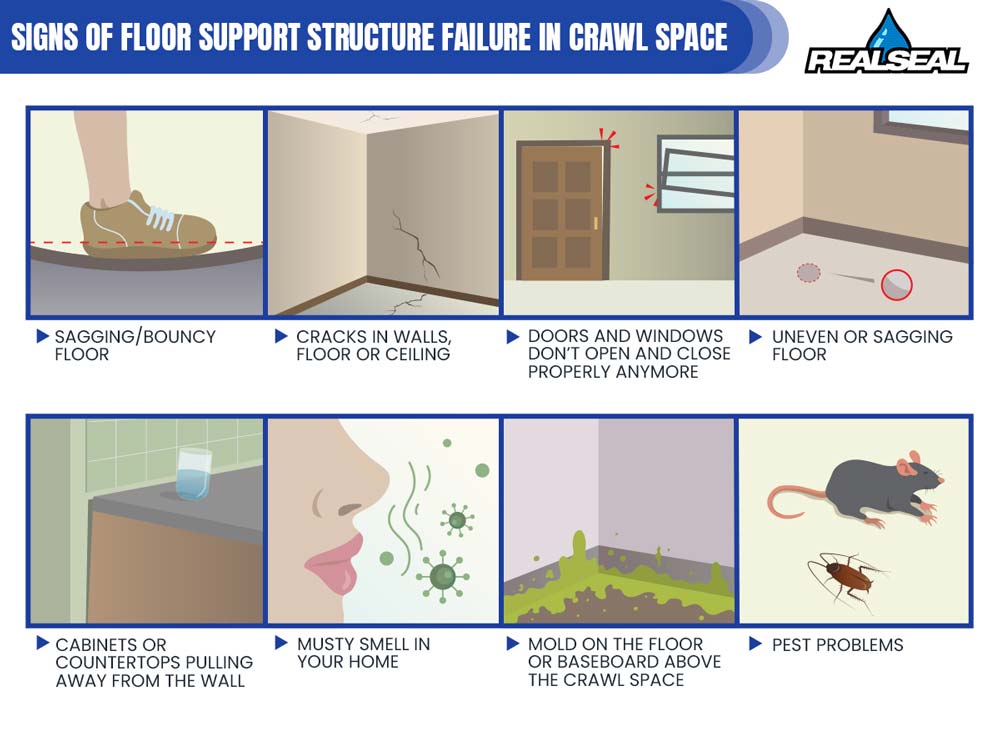
If you suspect a problem in your crawl space, contact a professional foundation repair contractor right away and ask for an assessment. Ignoring this issue can further damage your home.
How Are Sagging Floors Above a Crawl Space Repaired?
The correct repair solution will depend on what caused the floor above the crawl space to sag. Here are some possible repair options:
Replacing settled support posts
If the sagging floor was caused by settled support posts, the repair option might be to replace them with new, stronger ones to offer a sturdier foundation for the floor above. The new support posts are usually made of steel or pressure-treated wood, which are stronger and more durable than the older ones.
You’ll still need to address the root cause of the problem, though. Why did the support posts settle and become non-vertical? If they became non-vertical because they sank into soggy soil, you might also need to install a drain tile system to prevent the same thing from happening to the new support posts. See How A Drain Tile System Can Save You Money for more information.
Sistering weak joists
If one or more joists have weakened, sistering might be used. Sistering is the process of attaching new joists to the old ones. The new joists are attached to the existing ones using structural adhesive, nails, or screws and run parallel to each other, providing extra support and stability to the floor.
Installing screw jacks
Instead of replacing the settled wooden support posts with new wooden support posts, screw jacks might be installed instead. Screw jacks can be adjusted later if necessary.
Adding additional support posts
Sometimes, the floor above a crawl space sags because there aren’t enough support posts in the crawl space. Adding additional support posts might be the chosen repair solution in this case.
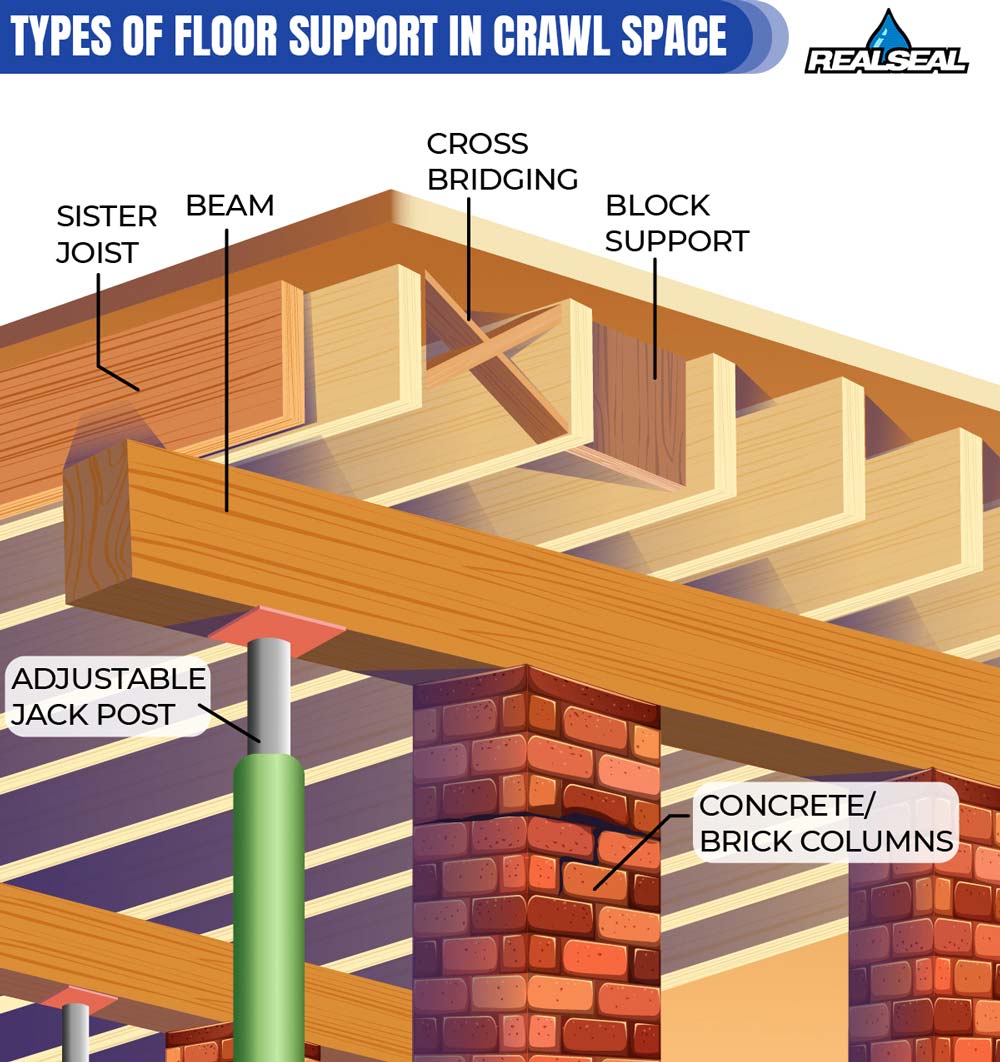
To ensure successful floor repair, consult a professional contractor with experience fixing sagging floors. With the right approach and proper care, your sagging floor can be restored to its original strength and stability, providing safety and comfort to you and your family for many years.
How Much Does It Cost to Fix a Sagging Floor?
The cost of fixing a sagging floor can vary depending on various factors, such as the extent of the damage, the cause of the sagging, the type of repair required, and your geographical location. Therefore, we can’t tell you how much it will cost to fix the sagging floor without inspecting your crawl space. The only way to know the repair cost is to contact an experienced foundation repair contractor in your area and ask for an evaluation.
Should I Buy a House With Sagging Floors Over The Crawl Space?
When determining whether or not to purchase a house with sagging floors, the root cause of the issue should be thoroughly investigated. Sagging floors can occur due to normal wear and tear, water damage, termites, and foundation settlement. If the cause is normal wear and tear or minor water damage, the repairs may be as simple as sistering a joist and adding a drain tile system. However, the repair cost may be significantly higher if there’s extensive termite damage or foundation settlement.
It’s essential to consider not only the cost of the repair but also any additional issues that may arise due to the sagging floors. For example, sagging floors can lead to wall cracks, plumbing issues, and structural damage. These problems can further increase the cost of repairs and may lead to safety concerns.
Before purchasing a house with sagging floors, it’s essential to have an experienced contractor assess the extent of the damage and provide a detailed estimate of the repair cost. This will give an accurate representation of the repair cost and ensure that the repairs are completed effectively and safely. You can then figure this repair cost into your offer.
If you’re in Chicagoland and think your home might have a foundation problem, contact The Real Seal today to schedule an evaluation and receive a repair estimate.
